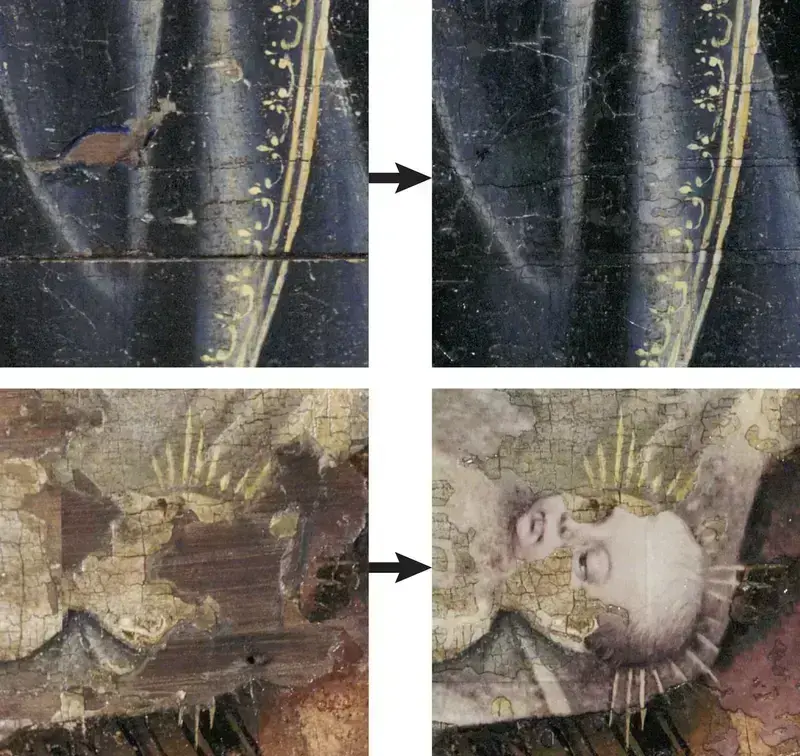A team of scientists from the Massachusetts Institute of Technology has developed an AI tool that restores time-damaged paintings in just a few hours. The technology has significantly reduced the time and cost of restoring works of art.
How does it work?
Time leaves its mark on paintings. Wear and natural aging lead to changes. colors the appearance of cracks and stains. It can take years for restorers to fix the damage. Therefore, they usually focus their efforts on the most valuable paintings.
But now a new technology will help expand the range of paintings that need restoration. It uses artificial intelligence and other computer tools for the digital reconstruction of damaged works. During the restoration process, a digital “mask” is created: the image is printed on a transparent polymer sheet and carefully placed over the painting.
To demonstrate the know-how, lead researcher Alex Kachkin restored a damaged 15th-century work attributed to one of the lesser-known Dutch painters. The extremely detailed piece was divided into four strips.
The painting numerous tiny cracks appeared. In many places, the paint had flaked off. Researchers noted that a significant portion of the damage was concentrated on small, intricate details. Traditional restoration of the canvas would have taken the restorers about 200 hours, the publication reported. The Guardian .
The team began the restoration by scanning the painting to determine the size, shape, and location of the damaged areas. A total of 5,612 individual sections were identified that required restoration.

Then the researchers created a digital “mask” in Adobe Photoshop. Initially, the scientists restored the missing paint spots by carefully selecting shades. The patterned areas that had suffered from time were recreated by copying similar patterns from other parts of the painting. The erased face of the baby was copied by the technicians from another canvas by the same artist.
After completing the work, the “mask” was printed on polymer film, coated with varnish to prevent the paints from smudging, and applied to the painting. In total, the team used 57,314 colors to fill in the damaged areas.
The process took 3.5 hours, which, according to researchers, is significantly faster than traditional restoration, which required 66 times more time.
Researchers noted that this technology with AI It can only be used on lacquered surfaces that are smooth enough for the film to adhere tightly to them. The “mask” can be removed or eliminated using special solvents used by restorers, leaving no traces on the artwork.
The team hopes that this method will enable galleries to restore and exhibit dozens of damaged paintings that are not considered valuable enough for significant expenses on traditional restoration.
The results of the study were published in the journal Nature. In the accompanying article, Professor Hartmut Kutzke from the Museum of Cultural History at the University of Oslo stated that thanks to this AI-based technology, damaged paintings can be restored faster and cheaper than with traditional methods.
According to him, this method is likely to be widely applied to paintings of lesser value. These are works that experts do not pay enough attention to and that have been gathering dust for decades behind closed doors in museum storage. But now these canvases – after innovative restoration – will be able to be seen by more art enthusiasts.
